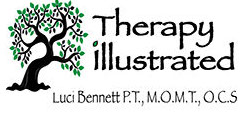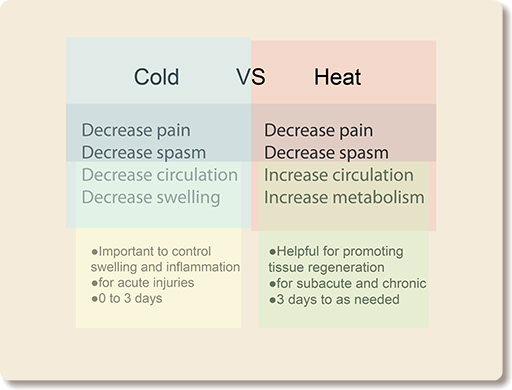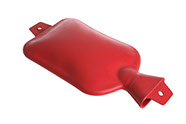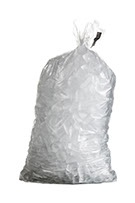


There are phases of healing that all musculoskeletal tissues progress through in order to regenerate. In the early stages, it is important to manage the pain and inflammation in order to begin the repair process. Heat and cold modalities are both helpful in the healing process; however, timing can be a factor.

Do Not Use Heat or Cold when:
-there is a loss of sensation in the area
-circulation is impaired
Examples: diabetic neuropathy, history of burns or frostbite, strokes, peripheral nerve injury, deep vein thrombosis, Raynauds
All grocery stores and pharmacies carry an array of heating pads and cold packs which work effectively. Trying a variety of different types will help find your preference.


It is generally recommended to apply heat for 20-30 minutes. Then remove the pad for at least an hour or two. It is unwise to sleep with a heating pad.
Ice packs can be helpful with applications of 5 minutes up to 30 minutes.
Some people have found that alternating heat for 10 minutes with cold for 5 minutes is more effective. After the first three days following the onset of pain/injury, the best modality is the one that feels the best. Some people actually have increased pain with an ice pack. There are those who do not care for heat. It is a matter of preference and keeping things simple.
Pain and muscle spasm are primary hurdles to overcome in the presence of inflammation. Muscle spasm is an increase in the resting tension of a muscle in response to pain signals. It is the body’s attempt to protect from further damage and pain. Unfortunately, muscle spasm can promote ongoing pain issues by causing more joint compression, limit blood flow to the area, retain metabolites as well as impair normal biomechanics. It is easy to get stuck in a cycle of chronic inflammation.
Which is better? Heat or Cold